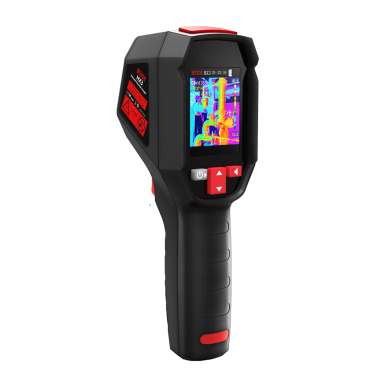
# Infrared Thermometer: A Non-Contact Temperature Measurement Tool
## Introduction to Infrared Thermometers
An infrared thermometer is a device that measures temperature from a distance by detecting the infrared energy emitted by objects. This non-contact method of temperature measurement has become increasingly popular in various industries and everyday applications.
Keyword: infrared thermometer
## How Infrared Thermometers Work
Infrared thermometers operate on the principle that all objects emit infrared energy as a function of their temperature. The device consists of:
– A lens to focus the infrared energy
– A detector that converts the energy into an electrical signal
– Electronics that process the signal and display the temperature reading
The thermometer measures the average temperature of all objects within its field of view, making proper aiming crucial for accurate measurements.
## Advantages of Non-Contact Temperature Measurement
Infrared thermometers offer several benefits over traditional contact thermometers:
– Safety: No need to touch potentially hazardous surfaces
– Speed: Provides instant temperature readings
– Hygiene: Ideal for medical and food service applications
– Convenience: Can measure moving objects or hard-to-reach areas
– Non-destructive: Doesn’t affect the object being measured
## Common Applications
Infrared thermometers are used in numerous fields:
### Medical Use
– Fever screening (especially during pandemics)
– Body temperature measurement
– Monitoring inflammation in tissues
### Industrial Applications
– Monitoring electrical components
– Checking mechanical equipment
– Quality control in manufacturing
### Food Service
– Checking food temperatures
– Monitoring refrigeration units
– Ensuring proper cooking temperatures
### HVAC and Building Maintenance
– Detecting heat loss
– Identifying insulation problems
– Checking duct temperatures
## Choosing the Right Infrared Thermometer
When selecting an infrared thermometer, consider these factors:
– Temperature range needed
– Distance-to-spot ratio
– Emissivity settings
– Response time
– Accuracy requirements
– Environmental conditions
## Proper Usage Tips
To get the most accurate readings:
– Ensure the lens is clean and unobstructed
– Hold the thermometer perpendicular to the surface
– Be aware of the distance-to-spot ratio
– Consider the emissivity of the material
– Avoid measuring through glass or other transparent materials
– Account for environmental factors like steam or dust
## Limitations to Consider
While infrared thermometers are versatile, they have some limitations:
– Cannot measure internal temperatures
– Affected by surface reflectivity
– May give inaccurate readings on shiny surfaces
– Require proper calibration
– Environmental conditions can affect accuracy
## Future Developments
Infrared thermometer technology continues to evolve with:
– Improved accuracy and resolution
– Smart connectivity features
– Integration with other diagnostic tools
– Advanced data logging capabilities
– More compact and ergonomic designs
Infrared thermometers have revolutionized temperature measurement across many industries. Their non-contact nature, speed, and versatility make them invaluable tools for professionals and consumers alike. As technology advances, we can expect even more sophisticated applications for this essential measurement device.
0 thoughts on “Infrared Thermometer: A Non-Contact Temperature Measurement Tool”